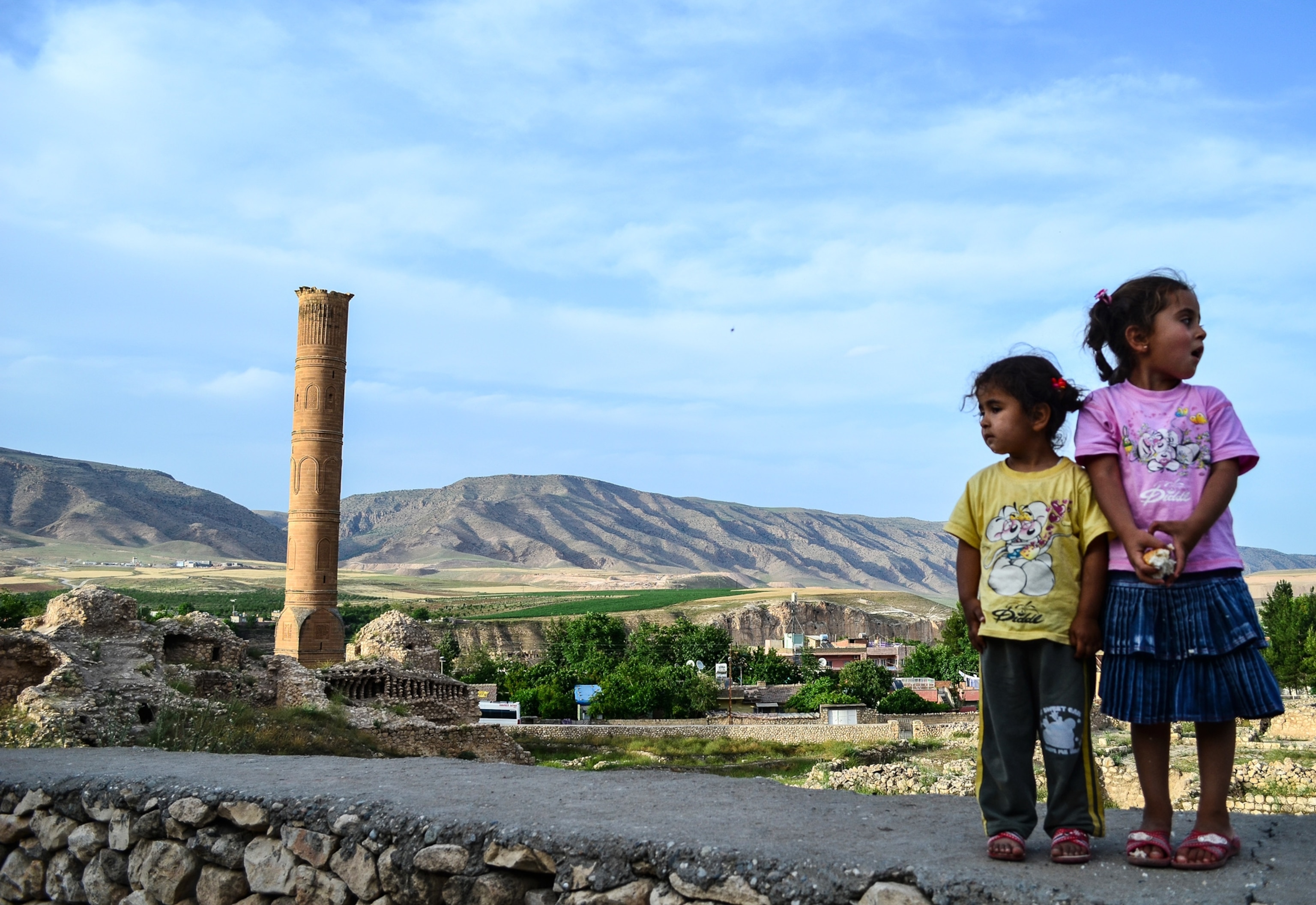New Dam in Turkey Threatens to Flood Ancient City and Archaeological Sites
Tigris River Dam puts wildlife and culture at risk, critics say.
From the Neolithic caves riddling its cliffs to the honey-colored, 15th-century minarets looming over its streets, Hasankeyf, Turkey, is a living museum of epic proportion.
Rare birds soar around the crumbling towers of its Artuqid bridge. Shepherds' songs have echoed through its canyons for centuries, even as the area transformed from a Byzantine bishopric to an Arab fortress to an outpost in the Ottoman Empire. Almost every major Mesopotamian civilization has occupied this 12,000-year-old settlement site on the banks of the Tigris River in southeastern Turkey, not far from the border with Syria.

But today's reigning power, the Turkish Republic, has a unique plan for Hasankeyf: submerging the ancient town beneath 200 feet (60 meters) of water.
That will be the result of a hydroelectric dam now under construction in Ilısu village, 60 miles (97 kilometers) downstream from Hasankeyf. In February 2013, Turkey's highest administrative court ordered construction to halt until an environmental impact assessment had been carried out.
"Then the Turkish government just changed the regulation so that the Ilısu Dam doesn't need an environmental impact assessment," says Dicle Tuba Kılıç, the Hasankeyf campaign coordinator for Turkey's Nature Foundation.
The last major dam to be built under a regional development plan known as the Southeastern Anatolia Project, the Ilısu Dam will generate nearly 2 percent of Turkey's electricity supply, and create an 11-billion-cubic-meter reservoir. Turkish officials say it will open later this year.
The dam joins a list of massive river-blockers that have submerged historic homes and cultural sites worldwide in the last century. During the 1950s, construction of Egypt's Aswan Dam to control the flooding of the Nile led to resettlements and the removal of monuments such as a massive statue of Ramses the Great. China's Three Gorges Dam on the Yangtze, completed in 2012, caused the relocation of 1.2 million people and the flooding of hundreds of archaeological sites. Brazil's Belo Monte Dam, now under construction, has triggered protests from indigenous people over its planned flooding of 250 square miles (650 square kilometers) of rain forest.
The Ilısu Dam is also expected to reduce the flow of the Tigris into Syria and Iraq, possibly exacerbating a six-year drought that has crippled agriculture in southern Iraq, said Kılıç. Upstream, the reservoir will inundate 300 historical sites and displace more than 25,000 people in Turkish towns along the Tigris, she added.

The Nexus of Energy and Culture
Hasankeyf townsfolk understand their country's need for energy.
"We aren't against the dam. But we want a dam that will leave Hasankeyf above the water," says Süleyman Ağalday, a local butcher. Like most of the town's residents, Ağalday is himself a memento of the area's diverse history: He's fluent in Kurdish, Turkish, and an Arabic dialect related to the Bedouin tongue spoken by his forebears.
Only one-fifth of the archeological sites around Hasankeyf have been unearthed so far, and local archeologists predict that 85 percent of the remainder will be flooded before they can finish excavating.

In 2010, a team from Turkey's Middle East Technical University proposed an alternative plan to Ilısu: five smaller hydroelectric dams along the Tigris that would leave Hasankeyf completely above water. Government officials did not respond specifically to the proposal, but declared that all efforts would be made to preserve Hasankeyf's culture and history.
The Ilısu Dam as planned is crucial to Turkey's future energy security, according to Ahmet Saatçi, director of Turkey's State Water Works, the government authority in charge of constructing the dam.
"Turkey is suffering for energy sources," he says. "We currently have to buy our energy from Russia and other countries, so we're trying to use our renewable energy to its fullest extent."
Doubts and Concerns
So the government has built new houses for the villagers on a nearby hillside, and has promised that Hasankeyf's biggest monuments will be moved.
"In the underwater area, we'll preserve some artifacts that can't be moved, and we'll create a center for tourism that can host diving activities and water sports," says Hasankeyf District Governor Ceyhun Dilşad Taşkın. "Hasankeyf will be transformed into a very modern city in the new settlement site."
"New Hasankeyf" is located on arid, rocky soil that is a stark contrast to the fruit trees and fertile gardens that now fill the backyards of Hasankeyf homes.
A three-bedroom house in the new site will cost 170,000 TL ($85,000), according to signs posted around the town, while residents' current homes have been valuated at one-eighth of that.

Some residents, many of whom already rely on government subsidies, say they don't want to take the government loans they would need to afford the new houses. They say economic opportunities are scarce in this depressed region of Turkey, the site of a three-decade-long civil war between the Kurdistan Workers' Party (PKK) guerilla army and the Turkish state.
So desperate are locals for jobs that even Hasankeyf villagers who oppose the dam have helped build it. Murat Sevinç worked at the site from 2010 to 2012.
"If there weren't so few job opportunities [here], nobody would want to work on something that was going to submerge his home under water," he says. "I don't want my city, my village, to be lost for a project that will last 50 years."
Sevinç said he has doubts about the stability of the concrete casing around the dam, and suggested that too much water was mixed into it.
The Ilısu Dam's project manager, Mahmut Dundar, refused repeated requests for interviews, saying he could not get permission from his superiors at Turkey's State Water Works to comment on the construction.
Regional Water Politics Heat Up
Downstream countries have their own concerns about Ilısu and Turkey's other planned dams.
In Iraq, "there are thousands of water refugees every year," says Bakhtiar Amin, former human rights minister of Iraq. "Many villages are depopulated because of this."
Turkey claims to release 500 cubic meters of river water downstream each second from its dams, but Amin says the actual amount is closer to 200 cubic meters per second.

Iraq and Syria have built their own big dams on the Tigris and Euphrates Rivers. But Turkey's dams dominate the rivers, especially the Euphrates. When the 27-billion-cubic-meter-capacity Atatürk Dam opened on that river in 1990, it reduced the mighty waterway to a trickle for one month.
In the Mesopotamian marshes of southern Iraq, which once covered one-fifth of modern Iraq's landmass and which have hosted human civilization since ancient Sumer, the flow of the Euphrates is now sometimes as low as 18 cubic meters per second, compared with the 90 cubic meters per second required to sustain the local population of Marsh Arabs, according to Jassim Al-Asadi, a local director for the non-governmental organization Nature Iraq.
"There won't be any more marsh in Iraq" if Ilısu and the other remaining dams in Turkey's Southeastern Anatolia Project are built, says Al-Asadi. Iraqi officials estimate that the project will dehydrate 670,000 hectares of arable land in the country.
Al-Asadi was born amidst the reeds of the majestic marshlands. As a child, he would paddle in a traditional wooden boat to school, where birds, fish, and snakes wandered through his reed-hut classroom during the flood season.
But the Tigris and Euphrates Rivers are now so low that salty water from the Persian Gulf has rushed in. This has raised river salinity to levels that are unhealthy for marsh wildlife, not to mention the Marsh Arabs, who now buy tanks of potable water in nearby towns and ferry them back to their homes in the marsh.
Agriculture around Iraq's marshes is also suffering from the lower river levels, causing mass urban migration and dozens of conflicts each year. One sheikh estimated that water scarcity caused 20 murders in his province in 2012.
Near Nasiriyah Province, where a 52-year-old farmer recently shot himself in the head after his farm's stream dried up completely, Salim Mihsin Saeed has a small fruit and vegetable farm that doesn't get enough water despite Saeed's high-efficiency drip irrigation system.
"This land used to be a marsh, but the water constructions in Turkey affected our whole country's water quality and quantity," he said last May, gesturing at his tiny tomato plants poking out of the parched earth. He isn't sure whether his farm will survive the next big Turkish dam.
On a larger scale, no one can predict exactly how much social upheaval the Ilısu Dam will cause. But as its construction draws to a close, people across modern Mesopotamia are anxiously waiting to see.
Julia Harte's trip was supported by a Young Explorer grant from the National Geographic Expeditions Council and a Dick Goldensohn Fund grant from the Center for Investigative Reporting.








